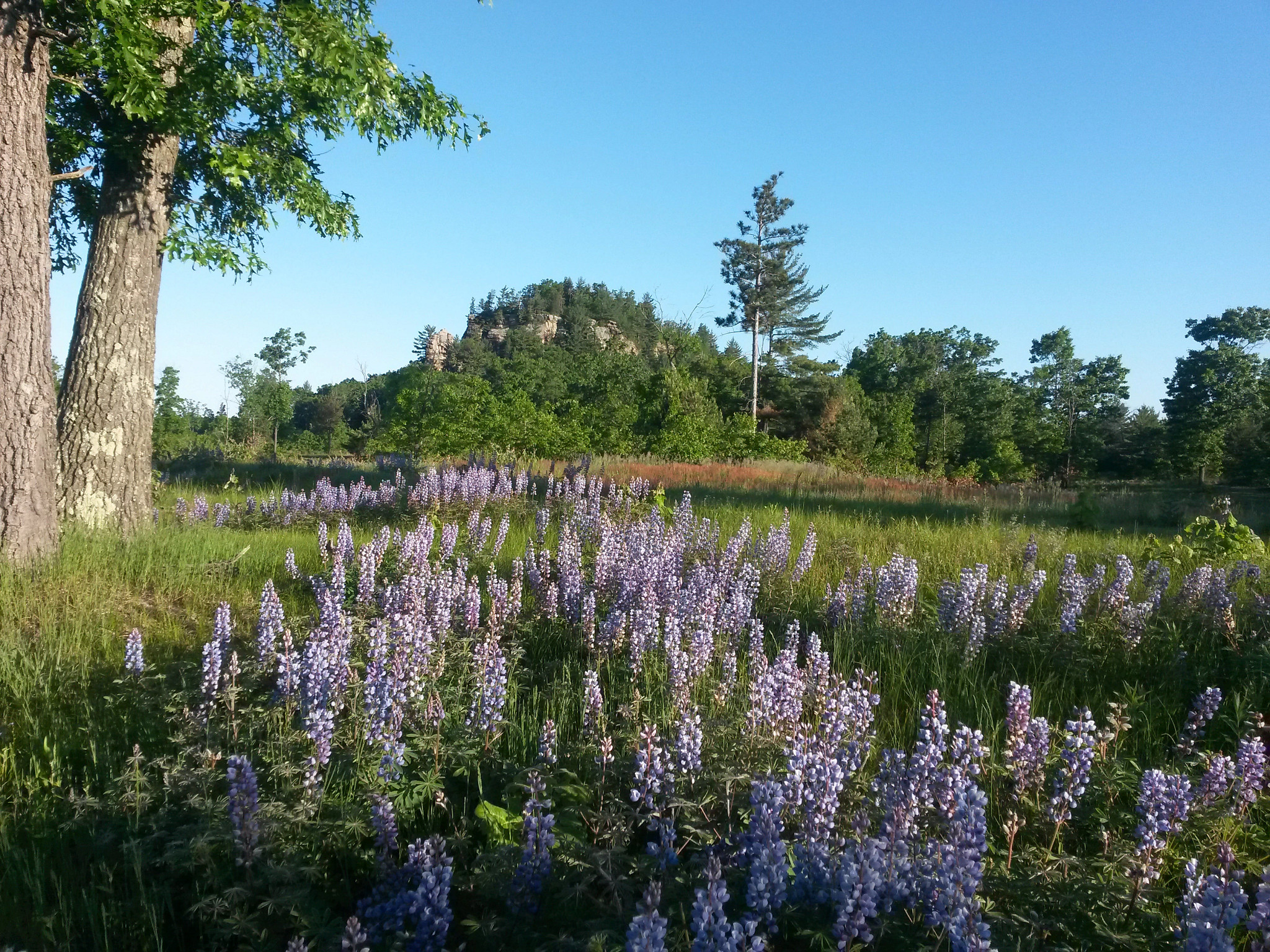Contact: Drew Feldkirchner, DNR Natural Heritage Conservation Director
Drew.Feldkirchner@wisconsin.gov or 608-235-3905
Thomas Meyer, DNR Conservation Biologist
Thomas.Meyer@wisconsin.gov or 608-266-0394
DNR Celebrating 70 Years Of State Natural Areas
Interactive Tours, Volunteer Workdays & New Features Explore Them
 Wisconsin's State Natural Area Program celebrates 70 years of saving some of Wisconsin's best remaining prairies, forests, wetlands and savannas, including Quincy Bluff and Wetlands State Natural Area in Adams County.
Photo credit: Jon Robaidek
Wisconsin's State Natural Area Program celebrates 70 years of saving some of Wisconsin's best remaining prairies, forests, wetlands and savannas, including Quincy Bluff and Wetlands State Natural Area in Adams County.
Photo credit: Jon Robaidek
MADISON, Wis. – This year marks the 70th anniversary of the Wisconsin Department of Natural Resources (DNR)’s State Natural Areas Program.
To help celebrate the milestone, the DNR is offering new opportunities for people to preserve, protect and appreciate Wisconsin’s best remaining prairies, forests, wetlands and geological wonders. Visit the DNR’s State Natural Areas webpage for a list of new features and to find a State Natural Area near you.
“Wisconsinites are very fortunate conservationists at the time had the foresight and commitment to save our natural heritage for future generations,” said Drew Feldkirchner, DNR Natural Heritage Conservation Director. “The DNR, partner organizations and volunteers have worked hard over the past 70 years to identify, acquire and protect these areas. We invite Wisconsinites to learn more about what makes these places special and to help us care for them.”
More information about Wisconsin’s State Natural Areas is now available:
- The summer issue of the Wisconsin Natural Resources magazine examines the system 70 years after its creation by the state legislature and as climate change, invasive species, development and other threats challenge the sites.
- A new bi-weekly feature highlighting State Natural Areas to visit and help care for, including opportunities to join in on a volunteer workday, begins June 22. Sign up now for the SNA Spotlight.
- New interactive online features showcase several sites and the plants and animals they harbor. Use these features and their interactive maps to help plan a visit to State Natural Areas to enjoy a short paddle, find a wild experience within a state park or explore the diverse landscapes along the Lower Wisconsin State Riverway.
- View unprecedented video from the air and ground of 12 State Natural Areas in Wisconsin in the 2021 PBS Wisconsin documentary, Wisconsin’s Scenic Treasures: Southern Vistas.
- Volunteer workdays resumed in May at many State Natural Areas. No experience or special equipment is needed. See coming workdays near you.
A Brief History On Wisconsin’s State Natural Areas
The Wisconsin Legislature created the SNA program in November 1951, responding to concerns expressed by Wisconsin conservationist Aldo Leopold and botanist John Curtis and others that Wisconsin’s distinct “natural communities” – discrete groupings defined by the soils, geology, plants and animals that evolved together to form different types of grasslands, wetlands and forests – were fast disappearing.
The goal of the program was to as nearly as possible represent the wealth and variety of Wisconsin’s native landscape for education, scientific research and for the long-term protection of Wisconsin’s biological diversity for future generations.
Wisconsin has more than 100 different natural communities, and many of them are globally rare, like tall grass prairie, pine barrens and oak savanna. More than 230 animal and plant species are listed endangered or threatened in Wisconsin, and 90% of those plant species and 75% of the wildlife species are preserved on State Natural Areas.
Parfrey’s Glen was designated the first State Natural Area in 1952, and the program has since grown to include sites owned by more than 50 partners. The U.S. Forest Service, The Nature Conservancy and The Prairie Enthusiasts are among the partners.
SNAs Offer A Wild Experience; Trails And Restrooms Not Included
Nearly all SNAs are open to the public for hiking, hunting, bird-watching, nature study and photography but most are largely undeveloped. They do not have trails, restrooms or other amenities because the primary purpose of these public lands is to protect the natural communities they encompass. Visitors are asked to enjoy these ecologically sensitive sites responsibly.
Undeveloped doesn’t mean unmanaged, however. Increasingly, the DNR must take a hands-on approach to these native habitats. The state is divided into nine districts – each with an ecologist responsible for managing state-owned sites in their region and working with small crews to help detect and control invasive species, conduct prescribed burns, collect and plant native seeds and cut unwanted brush. Volunteers operating through the State Natural Areas Volunteer Program are helping supplement staff work at about three dozen sites.
It takes work to maintain these important places, and much has changed in the last 70 years. In recent decades these places have experienced many new invasive species, a changing climate, white-tailed deer browse, encroaching development and other human-caused stressors that threaten their ecological values.
A soon-to-be-released strategic plan will establish the framework for maintaining the viability of SNAs into the future.
The DNR restoration and protection of SNAs are funded through grants, along with private donations to the Wisconsin Endangered Resources Fund. The Natural Resources Foundation of Wisconsin also provides important funding to support many SNAs.

